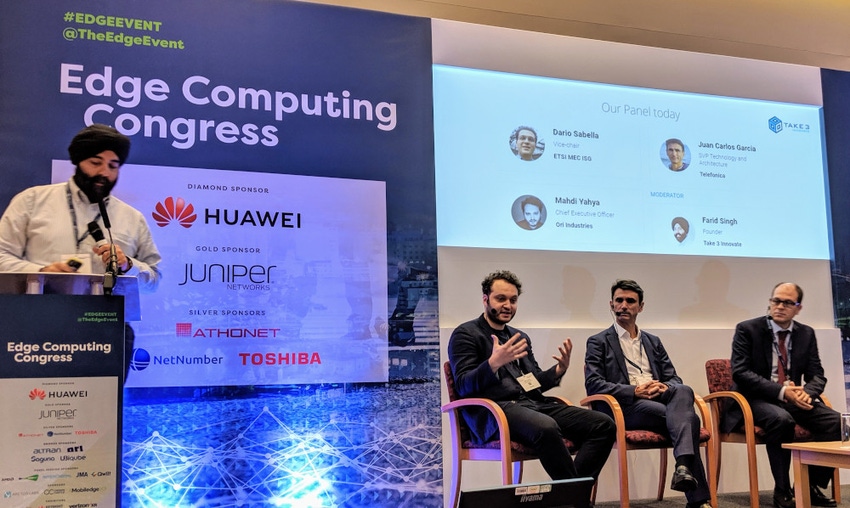At the Edge Computing Congress 2019 event in London, the keynotes and panel discussions focused on the unique opportunity for operators to own the edge if they want to.
September 18, 2019

At the Edge Computing Congress 2019 event in London, the keynotes and panel discussions focused on the unique opportunity for operators to own the edge if they want to.
Edge computing refers to distributed datacenters that place reduce the physical distance between the cloud and the edge of the network – i.e. the RAN. The main point of this is to reduce the lag resulting from interacting with the cloud in real time and to allow the kind of low-latency communication services that promise to be the most novel new feature of 5G. Edge computing is also expected to help with things like bandwidth flexibility for IoT, cloud security and data localisation.
The presentations were opened by Julian Bright of analyst firm Ovum, who warned that 5G probably needs the edge more than the edge needs 5G and set the tone for the rest of the morning by asking who will own it. Bright also raised the issue of interoperability and noted that the definition of a common framework for edge computing is some way from being determined.
As is often the way, most of the talking points came from a panel (pictured) that aimed to explore definitions of edge computing, what the point of it is, and the business cases for investing in it. It was agreed that the edge is not a discrete, standalone thing, but rather an extension of the cloud. That said, by definition it requires its own separate physical infrastructure, which has to be built and owned by someone.
This is presents a unique opportunity for operators, for whom distributed infrastructure is a core competence. They also own, or at least have access to, a lot of remote locations, so they have a head start over cloud specialists and IT companies. Edge computing was said to be the perfect example of the convergence of networks and IT, which raises the question of which of those worlds will define and own it.
A key issue for edge computing concerns interoperability. As an extension of the public cloud it needs to be usable by all stakeholders. One way to ensure this is standardisation, something the telecoms world is very familiar with. Standardisation typically takes a long time, however, and the panel warned that operators are likely to lose their advantages in this space if they allow themselves to be bogged down by it.
There are also cultural dynamics involved. The IT world typically moves faster and is less risk-averse than the networking world. While telcos are used to significant infrastructure capex, this is typically in areas where there is proven demand and ROI. Heavy investment in edge computing will require more of a ‘build it and they will come’ strategic philosophy.
This observation led to a discussion of the chicken-and-egg dilemma that comes with the prospect of investing in a new technological platform without a mature business case to go with it. As we saw with historical attempts to break the duopoly in smartphone operating systems, it’s hard to get customers for your platform without a strong app ecosystem, but developers are reluctant to embrace any platform that doesn’t have a large and enduring user base.
There was unanimity among the panel that ownership of the edge is there for operators to take if they want it, but they need to move fast. If they do they will need to accept risk in the form of capex without the guaranteed ROI they’re used to and they will also need to seed the app ecosystem in ways they have historically avoided. For operators the edge is about new revenue opportunities rather than efficiencies and their approach to it needs to reflect that.
After the panel there was a keynote from Mahadev Satyanarayanan, Professor of Computer Science at Carnegie Mellon University, who further explored the value propositions of edge computing. He stressed that the deeper the use of the edge, the more of a premium can be charged for the resulting service. A real-world example of such a service can be seen in the video below of a project Satyanarayanan oversaw, using vehicle cameras to enable crowdsourced traffic information without the driver needing to be actively involved.
About the Author(s)
You May Also Like








.png?width=300&auto=webp&quality=80&disable=upscale)


_1.jpg?width=300&auto=webp&quality=80&disable=upscale)


.png?width=800&auto=webp&quality=80&disable=upscale)